Disclosure: This article contains affiliate links. We may earn a commission from purchases at no extra cost to you, which helps our travel content.
The moment I stepped into Yazd's ancient bazaar, time seemed to slow. Amber light filtered through latticed ceilings, illuminating corridors where artisans have traded treasures for centuries. After years of exploring markets from Marrakech to Mumbai, I've developed a particular weakness for textiles—but nothing prepared me for the kaleidoscopic wonderland of Persian carpets in Yazd, where each knot tells a story of tradition, artistry, and cultural heritage that's impossible to resist.
Understanding the Living Art of Persian Carpets
Persian carpets aren't merely floor coverings—they're investments, heirlooms, and expressions of an ancient art form that has evolved over thousands of years. In Yazd specifically, carpets often feature distinctive geometric patterns and desert-inspired color palettes that reflect the city's position along the historic Silk Road.
Before diving into the bazaars, I spent an afternoon at the Carpet Museum near Amir Chakhmaq Complex, where I gained crucial context on regional patterns, materials, and techniques. The curator explained how to distinguish between machine and hand-knotted pieces—a fundamental skill when the price difference can be thousands of dollars.
Knot density (measured in raj) directly correlates with quality and price. While examining carpets, I used my jeweler's loupe to count knots on the reverse side—a tip from a fourth-generation carpet merchant that saved me from several beautiful but overpriced pieces. The higher the knot count, the finer and more valuable the carpet.
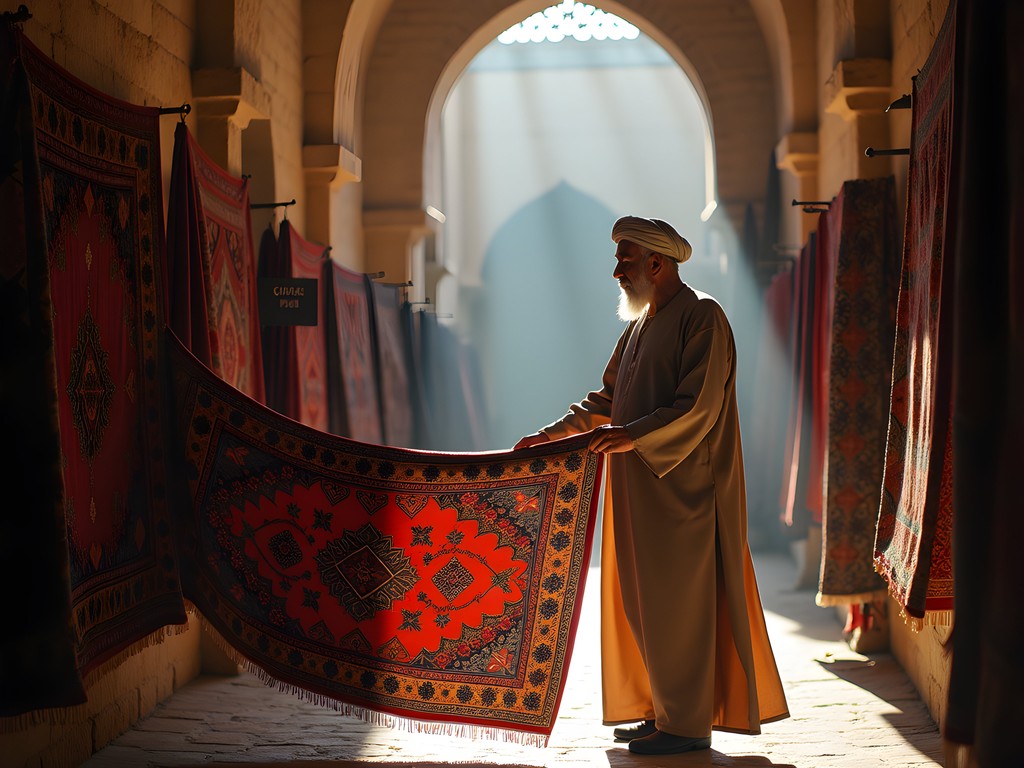
💡 Pro Tips
- Always flip carpets over to examine the knotting on the reverse side
- Natural dyes fade beautifully over time while synthetic dyes can look harsh
- Learn to recognize common regional patterns like the Yazdi Mehrab (prayer arch) design
Navigating Yazd's Carpet Bazaars Like a Local
Yazd houses several carpet markets, but I found the most extraordinary pieces in Khan Bazaar and the specialty shops surrounding the Jameh Mosque. Unlike the tourist-oriented Grand Bazaar in Tehran, Yazd's markets cater primarily to discerning locals and collectors, offering authenticity that's increasingly rare.
Arrive early—around 9am—when merchants are setting up and before the day's heat intensifies. The light at this hour is perfect for examining colors, and merchants are often more relaxed for meaningful conversation. I block out full mornings for carpet exploration, carrying only essentials in my crossbody bag to keep my hands free for carpet handling.
The ritual begins with tea—always. Refuse this hospitality, and you've signaled you're not a serious buyer. I spent two hours with Mr. Ahmadi near the Jameh Mosque, discussing everything from his children's education to Madrid's architecture before we even unfolded the first carpet. This wasn't time wasted but relationship investment that ultimately led to seeing his private collection, including museum-quality pieces rarely shown to tourists.

💡 Pro Tips
- Never rush the process—carpet shopping is a relationship-building exercise
- Visit multiple shops before purchasing to understand price ranges
- Take photos (with permission) of carpets you're considering to compare later
The Art of Negotiation: Cultural Etiquette & Strategy
Negotiation isn't just expected in Yazd's carpet bazaars—it's an essential cultural ritual. However, there's a world of difference between thoughtful bargaining and aggressive haggling that can damage relationships.
My approach begins with genuine appreciation. Before discussing price, I ask about the carpet's origins, the weaver, and the significance of specific motifs. This demonstrates respect for the craft and establishes that I'm an informed buyer. When a particularly stunning silk Nain carpet caught my eye, the merchant noticed my genuine admiration and was more inclined to offer his best price.
Expect the initial price to be 30-50% higher than what you'll ultimately pay. I start my counter-offer at about 50% of the asking price, knowing we'll meet somewhere in the middle. Keep a currency converter app handy, as prices may be quoted in dollars, euros, or Iranian rials, sometimes strategically switching between currencies.
My most successful negotiations happened when I was genuinely prepared to walk away. When I hesitated over a gorgeous Qashqai tribal rug, the merchant called me back with a significantly reduced offer as I reached the door—a classic technique that works both ways in this dance of commerce.

💡 Pro Tips
- Never feign disinterest in a piece you truly love—experienced merchants can tell
- Mention budget constraints respectfully rather than criticizing the carpet's value
- Consider purchasing multiple pieces for additional discounting leverage
Authentication & Transportation: Bringing Your Treasure Home
Once you've selected your perfect carpet, authentication becomes paramount. Reputable merchants provide certificates of authenticity detailing the carpet's origin, materials, knot count, and age. These documents are crucial for both insurance and potential future resale value.
I always carry my portable UV flashlight to check for synthetic materials that glow under ultraviolet light—natural wool and silk won't fluoresce. This simple test has saved me from several convincing counterfeits.
For transportation, quality merchants offer international shipping with insurance, typically costing 10-15% of the carpet's value. My preferred method, however, is carrying smaller pieces myself. I've found the compression packing cubes invaluable for protecting and compressing carpets in my luggage without creating permanent creases.
Before packing, I document my purchase thoroughly, photographing the carpet from multiple angles and close-ups of significant details. These images prove invaluable for insurance purposes and help with proper display once you're home. I also keep all purchase documentation, export permits, and receipts organized in a document organizer dedicated solely to my textile purchases.
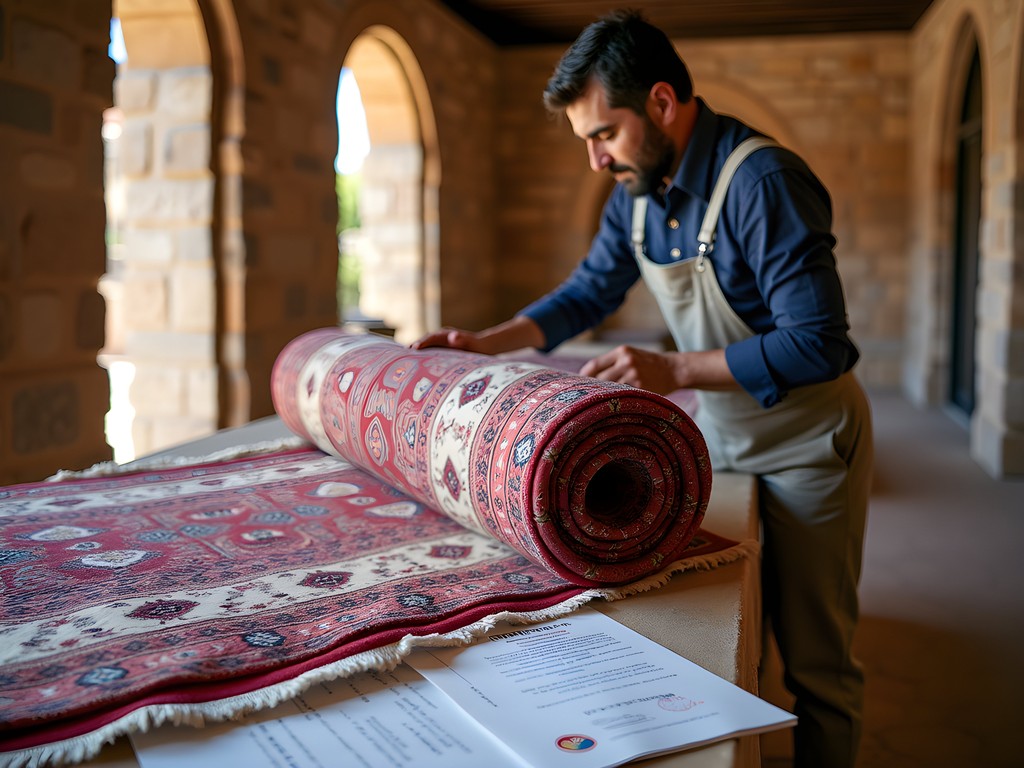
💡 Pro Tips
- Request export documentation from your merchant to avoid customs issues
- Take detailed photos of your carpet before packing for insurance purposes
- Consider having valuable carpets appraised upon returning home
Beyond Shopping: The Cultural Immersion of Carpet Appreciation
My most memorable experiences in Yazd's carpet world happened outside the commercial transaction. Through connections made in the bazaar, I arranged a visit to a family workshop on the outskirts of the city, where three generations of women worked side by side at massive looms.
The grandmother, her fingers gnarled from decades of knotting, demonstrated techniques unchanged for centuries. Without speaking a common language, we communicated through the universal vocabulary of craft. I recorded these demonstrations using my smartphone gimbal stabilizer to capture the mesmerizing rhythm of their work without intrusive shakiness.
For those seeking deeper immersion, I recommend the three-day carpet workshop at the Yazd Cultural Heritage Center. While I initially felt clumsy attempting basic knotting techniques, gaining even rudimentary skills transformed how I evaluate carpets. Understanding the physical labor behind each knot makes the investment more meaningful.
On my final evening, I attended a private carpet exhibition at the historic Lariha House, where collectors shared stories of pieces that had journeyed through wars, revolutions, and generations of family history. Sipping rosewater tea beneath ancient wind catchers while examining museum-quality carpets remains one of my most cherished travel memories.
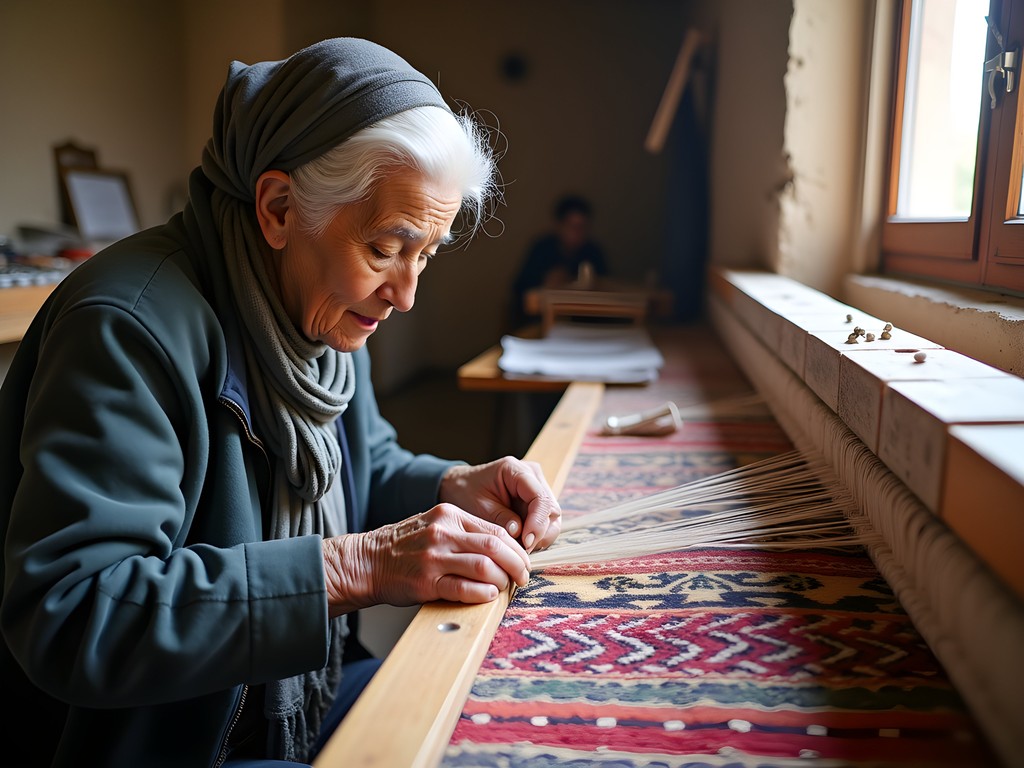
💡 Pro Tips
- Ask merchants about visiting local workshops—many have family connections
- Learn basic carpet-making terminology in Farsi to demonstrate genuine interest
- Consider specialized carpet tours that include both shopping and cultural education
Final Thoughts
As I sit writing this in my Madrid apartment, my Yazdi carpet—with its geometric medallions in saffron and indigo—serves as both a functional piece of art and a daily reminder of the ancient city where it was created. Beyond its aesthetic value, it represents the connections formed, the cultural understanding deepened, and the traditions honored through thoughtful acquisition.
Carpet shopping in Yazd transcends mere consumption; it's an immersion into a living heritage that has survived millennia. The knowledge you gain becomes as valuable as the carpet itself—a cultural fluency that enriches future travels and deepens appreciation for global craftsmanship.
Whether you return with a museum-quality masterpiece or a modest tribal piece, the experience of truly engaging with Yazd's carpet culture will remain long after the vibrant colors have begun their centuries-long mellowing. In our increasingly mass-produced world, these handcrafted treasures represent something increasingly rare: the perfect marriage of artistic expression, cultural heritage, and functional beauty that improves with age—much like the travel experiences we cherish most.
✨ Key Takeaways
- Invest time in learning about carpet styles and techniques before shopping
- Build genuine relationships with merchants through cultural respect and patience
- Look beyond tourist areas to find authentic pieces with better value
- Document your purchases thoroughly for both practical and sentimental reasons
📋 Practical Information
Best Time to Visit
March to May (spring) or September to November (fall)
Budget Estimate
$500-$10,000+ depending on carpet quality and size
Recommended Duration
Minimum 3 days dedicated to carpet exploration within a week-long Yazd visit
Difficulty Level
Intermediate

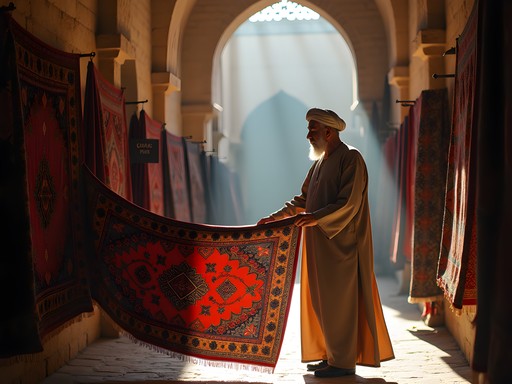
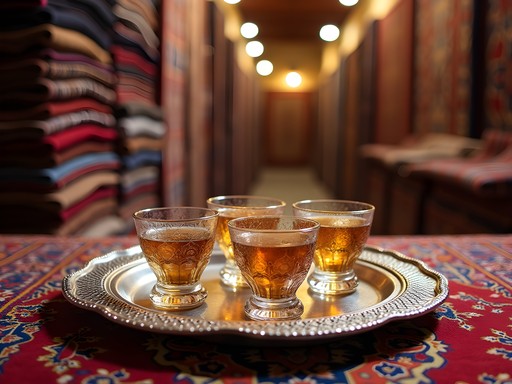
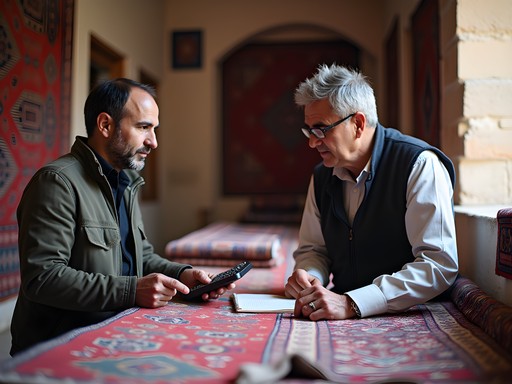
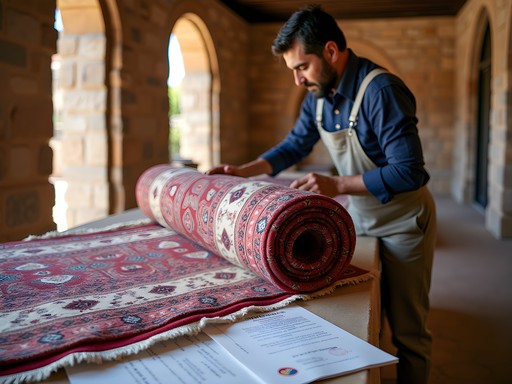
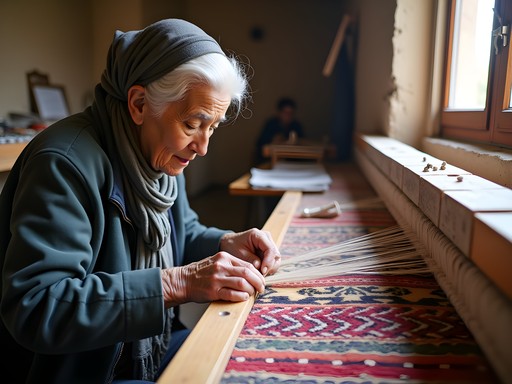




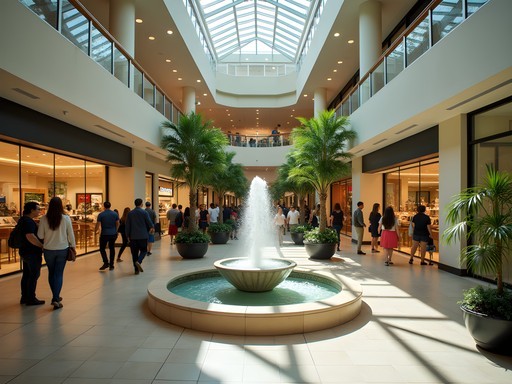



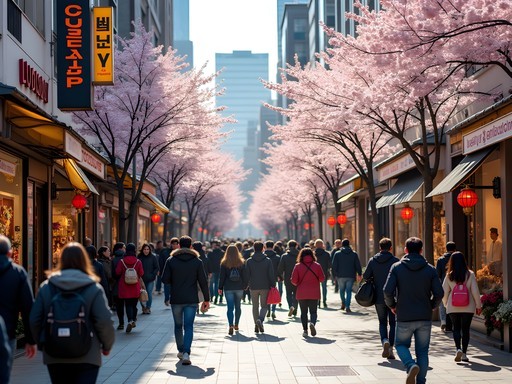

Comments
Casey Andersson
What a fantastic guide, Jasmine! I visited Yazd's carpet bazaars last winter and it was truly magical. One tip I'd add - I found bringing a compact guidebook with Farsi phrases specifically for shopping/negotiating was incredibly helpful. The merchants really appreciated my attempts at their language! Also, for anyone planning a visit, I recommend starting early in the morning when the light filtering through the bazaar ceiling creates this incredible atmosphere. The merchants are fresher then too, and often more willing to give better prices before they've made their first sales of the day. My prized possession is now a Kerman-style carpet with blue medallions that I got for about 30% less than initial asking price. Worth every penny of the extra baggage fee!
Jasmine Palmer
Great point about the morning light, Casey! It really does transform the bazaar. And yes to learning a few Farsi phrases - it opens so many doors. Your Kerman carpet sounds stunning!
happyfan
Going to Iran next month and Yazd is on my itinerary! How much should I budget for a small carpet? And is card payment possible or strictly cash?
Jasmine Palmer
For a quality small carpet (around 3x5 feet), I'd budget $200-500 depending on materials and complexity. Definitely bring cash - US dollars or euros work well. Cards aren't widely accepted in the bazaars. Also bring a tape measure if you have specific size requirements!
Casey Andersson
Just to add to Jasmine's advice - I found having photos of my home space on my phone really helpful when carpet shopping. Makes it easier to visualize colors and sizes. And don't forget to check if your country has any import restrictions on textiles from Iran before you buy!
happyfan
Thanks so much for the tips! Will definitely bring cash and a measuring tape. Can't wait!
coolpro
This brings back so many memories! I was in Yazd last year and bought a small geometric pattern rug. The negotiation part was intimidating at first but ended up being fun once I got over my nerves. The tea they serve during negotiations is amazing too - I think I spent more time drinking tea than actually shopping! Did you find that the prices in Yazd were better than in Tehran or Isfahan?
Jasmine Palmer
The tea ritual is half the experience, isn't it? I found Yazd prices to be slightly better than Isfahan and definitely better than Tehran, especially for the geometric designs typical of the region. Did you ship your rug home or brave carrying it with you?
coolpro
I actually carried mine with me! It was small enough to fit in my suitcase after some creative packing. The seller showed me how to roll it properly so it wouldn't get damaged. Totally worth the extra luggage weight!
sunsetvibes
Your Madrid apartment with that saffron and indigo carpet sounds dreamy! Love how travel treasures transform our homes ❤️
roamwanderer
I'm heading to Yazd next month! How much should I budget for a small authentic carpet? And did you need special permits to bring it back home?
Jasmine Palmer
For a quality small carpet (3x5 feet), I'd budget $300-600 depending on material and knot density. Each carpet comes with an export certificate - no additional permits needed for personal use items!
roamwanderer
That's super helpful, thanks! Definitely more affordable than I expected!
winterhero
Great post! Did anyone have issues with shipping their carpets home? I'm worried about customs fees when I return to Canada.
coolguide4792
I shipped mine to the US and had to pay about 3% in duties. The seller arranged everything and gave me tracking. Took about 3 weeks but arrived perfect!
Kimberly Murphy
Jasmine, your post brought back SO MANY memories! I was in Yazd last autumn and completely fell in love with the bazaar atmosphere. The carpet sellers were absolute characters - one gentleman spent nearly two hours showing me different styles and telling me stories behind each pattern. I ended up with a gorgeous nomadic Qashqai piece with amazing tribal motifs. My top tip for anyone going: learn a few Persian phrases before negotiating - the sellers absolutely lit up when I attempted to speak Farsi! Also, don't miss the smaller workshops just off the main bazaar where you can sometimes see carpets being made. The whole experience was magical!
oceanzone
Just got back from Iran last month and your negotiation tips would have saved me so much hassle! I ended up with a gorgeous Nain carpet but definitely overpaid at first. The shopkeeper actually called me back the next day and gave me some money back, saying he felt bad. That tea ritual during negotiations is so important - I found that the longer you stay and chat, the better the price gets. Also worth noting that I used my currency converter constantly during negotiations since the exchange rates were confusing with all the zeros in Iranian currency. For anyone planning a trip, the shipping services at the bazaar are actually quite reliable - my carpet arrived home before I did!
summervibes
Going to Iran next month! Is Yazd better for carpets than Isfahan?
Jasmine Palmer
Both are excellent! Yazd has more geometric designs and often better prices, while Isfahan is known for more intricate floral patterns. Depends on your taste!
Gregory Boyd
Excellent breakdown of the carpet-buying process, Jasmine. Having spent three weeks in Iran last year, I can attest to the complexity of carpet selection. One analytical observation: the regional variations in knot density between Yazd, Isfahan and Tabriz carpets are quite remarkable. In Yazd, I found the geometric patterns to be more pronounced than the floral designs prevalent elsewhere. For those concerned about authentication, I'd recommend photographing the back of the carpet—the knot pattern is often more revealing than the front. Also worth noting that prices in Yazd were approximately 15-20% lower than Tehran for comparable quality.
winterhero
That tip about photographing the back is gold! Never would have thought of that. Did you have any issues getting your carpet through customs?
Gregory Boyd
No issues with customs. Just make sure you get the proper export documentation from the seller. I carried my smaller piece as hand luggage, but had a larger one shipped. Used luggage scale to make sure I wasn't over the weight limit for carry-on.
Venture X
Premium card with 2X miles, $300 travel credit, Priority Pass